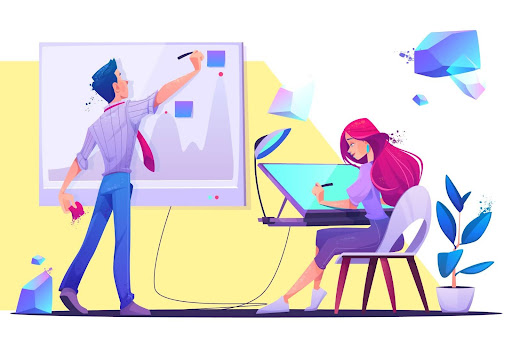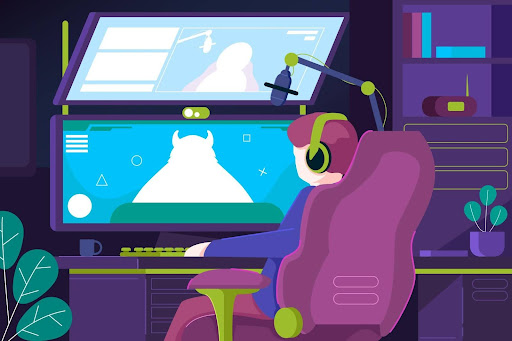The Rising Popularity of the Game Development Industry in the Australian Market
Australia’s game development industry is experiencing a notable growth in popularity and market expansion. Fueled by a mix of talent, creativity, and a vibrant gaming culture, Australia has become a hub for innovation in the gaming industry.
In this article, we’ll try to answer the question “how to make 3d characters for games”, providing practical tips for crafting compelling characters tailored to the Australian gaming market. Whether you’re a developer or a gaming enthusiast, join us as we uncover the secrets behind creating characters suitable for various game genres.
Stages of 3D Game Character Design
-
Conceptualization and Design
The first stage of 3D game character design is conceptualization and design. This stage involves brainstorming ideas, sketching initial designs, and refining concepts until a clear vision emerges. Sketches and concept art are used to explore different design options and refine the character’s appearance before moving on to the next stage.
Keep in mind, the goal is not merely to craft a character but to narrate their tale through their design. Therefore, unleash your creativity without restraint, and witness as your character emerges vividly from the depths of your imagination!

-
Modeling and Sculpting
Once the character concept is finalized, the next step is 3D modeling. It is the process of creating a three-dimensional representation of the character using specialized software such as Blender, Maya, or ZBrush. Modelers use a combination of polygonal modeling, sculpting, and other techniques to bring the character to life in three dimensions.
This stage is crucial, as it establishes the character’s physical appearance and sets the stage for subsequent stages of the design process.
-
Texturing
After the 3D model is created, the next stage is texturing. Texturing involves adding surface detail, such as skin, clothing, and props to the character to make it visually appealing and lifelike. Texture artists use software like Substance Painter or Photoshop to create intricate textures that enhance the character’s visual appeal and convey important details about their identity and personality.
-
Rigging
Once the character model is textured, it’s time to rig it for animation. Rigging involves creating a digital skeleton (hierarchical system of bones and joints) which are then connected to the character’s mesh. This allows the artist to manipulate the character’s movements by conducting the rig controls. Rigging artists use specialized software to define how each bone influences the character’s movement, enabling realistic animations and expressions. Here is a list of main resources that can be used for Rigging.
Maya: Powerful rigging tools for complex setups.
Blender: Free, flexible rigging with automatic weight painting.
3ds Max: Comprehensive rigging, including CAT system.
Cinema 4D: Intuitive rigging with Character Object.
Houdini: Procedural rigging and animation.
-
Animation
Once rigged, the character is ready to be brought to life through animation. Animation involves creating movement sequences for the character, such as walking, running, jumping, and interacting with objects in the game world. Animators use keyframes to define the character’s poses and movements, breathing life into the digital creation. This process involves the precise manipulation of keyframes, which serve as temporal markers delineating the character’s precise poses and movements.
-
Lighting and Rendering
Once the character model is fully rigged and animated, it’s time to illuminate and render the scene for bringing the game environment to life. Lighting plays a crucial role in setting the mood, atmosphere, and overall visual appeal of the game environment. Lighting artists utilize various techniques to achieve desired effects, including:
- Global Illumination: simulates the indirect bouncing of light within the scene
- Shadow Mapping: creates realistic shadows that add depth and dimension to the environment.
- Ambient Occlusion: simulating the soft shadows that occur in areas where objects are close together.
- High Dynamic Range (HDR) Rendering: expands the range of luminance values in the scene.
Rendering is the process of generating the final images or frames of the animated character within the game environment. Rendering artists optimize settings and parameters to produce high-quality visuals that meet the desired aesthetic standards. They may also apply post-processing effects to enhance the overall look and feel of the scene, such as depth of field, motion blur, and color grading.
Tools and Software for 3D Character Design
Below are some of the most popular tools and software used for 3D game character design.
- Blender: versatile and free open-source 3D creation suite favored for its comprehensive features, including modeling, sculpting, animation, and rendering.
- Autodesk Maya: powerful software for 3D animation, modeling, and rendering, offering industry-standard tools and workflows.
- ZBrush: digital sculpting tool preferred by character artists for its ability to create intricate 3D models with high-resolution details.
- Substance Painter: used for texture painting, as it offers a user-friendly interface and advanced features for creating realistic textures for 3D models.
- Adobe Photoshop: used for image editing and texture creation, allowing artists to refine textures and add final touches to character designs.
- Autodesk 3ds Max: popular software for 3D modeling and animation, favored by for its wide range of tools and compatibility with other Autodesk products.
- Unity: versatile game engine known for its ease of use and extensive asset store, making it a preferred choice for Australian developers seeking to create 3D characters and animations for games.
- Unreal Engine: offers advanced features for character animation, rendering, and simulation; preferred choice for larger game development projects.
Conclusion
We’ve delved into the intricacies of 3D character design, uncovering the stages, techniques, and tools that shape the creation of captivating characters tailored by the Australian game developers. From conceptualization to final rendering, each step is infused with the essence of storytelling, inviting developers and enthusiasts alike to unleash their creativity and breathe life into their digital creations.




